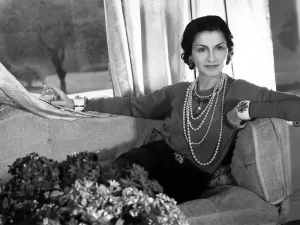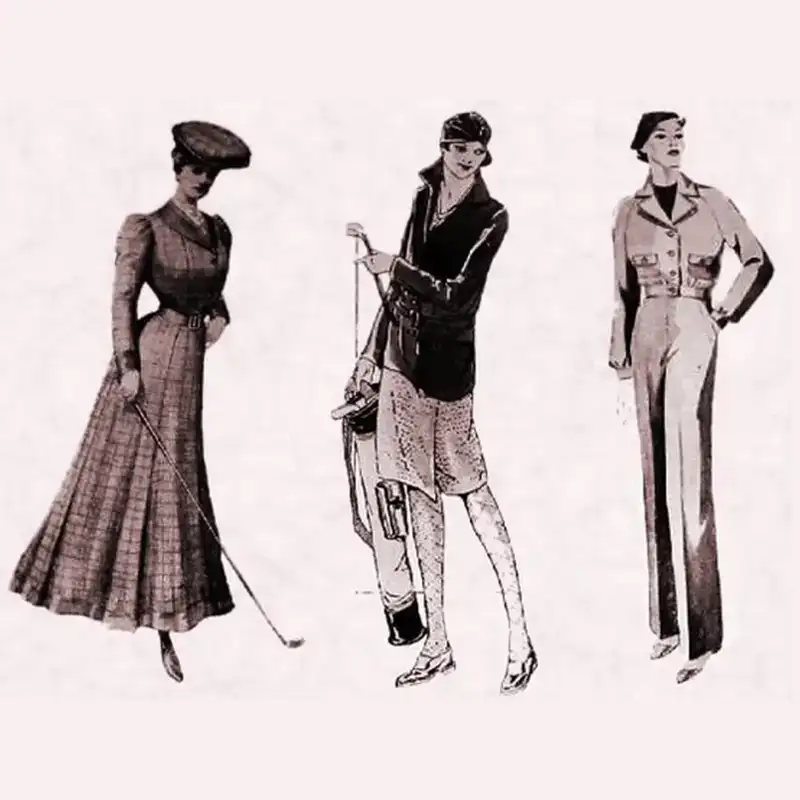When Did Sportswear Become Fashionable?
When exactly did sportswear transform from purely functional attire to a fashion statement? This intriguing shift began in the late 19th century, courtesy of British designer John Redfern, who introduced athletic apparel for women. The momentum picked up in the 1920s with Coco Chanel’s revolutionary jersey suits, blending comfort and style in ways previously unseen. Over the decades, sportswear evolved, reflecting societal norms and technological progress. But what were the key cultural shifts and innovations that truly cemented sportswear’s place in everyday fashion? Unpacking this evolution reveals a fascinating narrative of style and functionality intertwining.
Historical Milestones
 How did sportswear move from athletic fields to fashion runways? The evolution of style began in the late 19th century when British designer John Redfern created athletic apparel for women. This marked a pivotal shift, bridging the gap between functionality and fashion. In the 1920s, Coco Chanel revolutionized sportswear by introducing jersey suits and dresses, blending comfort with chic design. Her iconic designs laid the foundation for sportswear’s mainstream appeal.
How did sportswear move from athletic fields to fashion runways? The evolution of style began in the late 19th century when British designer John Redfern created athletic apparel for women. This marked a pivotal shift, bridging the gap between functionality and fashion. In the 1920s, Coco Chanel revolutionized sportswear by introducing jersey suits and dresses, blending comfort with chic design. Her iconic designs laid the foundation for sportswear’s mainstream appeal.
As fashion influences grew, designers like Clare Potter and Claire McCardell further democratized sportswear, making it accessible to everyday people. The 1960s saw the emergence of color-coordinated tracksuits, cementing sportswear’s place in popular culture. These designs weren’t just about utility; they were stylish statements embraced by the masses.
Celebrity endorsements played an essential role in this transformation. Figures like Bruce Lee popularized stretchy tracksuits in the 1970s, while the Hip Hop community, led by Run-DMC, turned Adidas Superstars into urban fashion staples. These endorsements propelled sportswear into the limelight, making it a permanent fixture in fashion runways and streetwear alike. The journey from athletic fields to high fashion showcases sportswear’s enduring versatility and appeal.
Cultural Shifts
In recent years, cultural shifts have catapulted sportswear from gym attire to everyday fashion, reflecting changes in lifestyle and social attitudes. This transformation is largely attributed to the athleisure boom, where blending athletic wear with casual clothing became mainstream. The COVID-19 pandemic accelerated this trend, as people sought comfortable yet stylish outfits for working from home and limited social outings.
Fashion evolution has played a significant role in this shift. Designers are now creating sportswear that seamlessly integrates into street style, making it acceptable for various social settings beyond the gym. High-profile athletes and celebrities often showcase these looks on social media, amplifying their impact and desirability.
Social media platforms have been instrumental in driving the sportswear trend. Influencers and fashion enthusiasts share their athleisure ensembles, sparking widespread interest and adoption. This visibility has redefined what is considered fashionable, making comfort and functionality key elements of modern style.
Everyday Convenience
Sportswear’s everyday convenience stems from its ability to seamlessly integrate into busy lifestyles with minimal effort. This practicality is a major reason people have embraced it as part of their daily wardrobe. The comfortable styling of sportswear ensures that individuals can move freely, whether they’re running errands or attending casual gatherings. Functional designs, such as moisture-wicking fabrics and stretchable materials, make these clothes suitable for a variety of activities, enhancing their appeal.
The concept of casual chic has also played a significant role in the rise of sportswear. Items like joggers, hoodies, and sneakers offer an easy fashion solution that aligns with contemporary aesthetics. These pieces create effortless looks that require little to no planning, making them ideal for those who seek both style and comfort without the hassle.
Moreover, sportswear’s easy-to-wear nature means it can be quickly thrown on in the morning, reducing the time spent on outfit selection. This aspect is particularly appealing to those with hectic schedules who still want to look presentable. To sum up, the everyday convenience of sportswear lies in its blend of comfortable styling, functional designs, and the effortless looks it offers.
Versatility in Fashion
Sportswear offers remarkable versatility, allowing it to seamlessly shift from gym workouts to casual daywear. This adaptability is a cornerstone of the athleisure trend, making it a dominant force in contemporary fashion. Athleisure blurs the lines between athletic and everyday clothing, creating a cross-functional wardrobe suitable for various activities. The street style movement has also embraced sportswear, showcasing how these pieces can be both stylish and practical.
The fashion evolution has seen sportswear transform from niche athletic gear to mainstream attire. Today’s consumers demand clothing that can keep up with their dynamic lifestyles, and sportswear delivers. Its ability to provide comfort while maintaining a polished look makes it an indispensable part of modern wardrobes. This style revolution reflects a shift towards prioritizing functionality without sacrificing fashion.
From sleek leggings to stylish sneakers, sportswear pieces are engineered to perform yet designed to impress. They offer the flexibility to move effortlessly from a morning jog to a lunch date, embodying the essence of cross-functional fashion. By integrating sportswear into everyday ensembles, wearers enjoy the blend of comfort, style, and versatility that defines today’s fashion landscape.
Technological Advancements
Modern sportswear’s versatility is amplified by technological advancements that enhance both performance and style. Moisture-wicking fabrics, for example, have revolutionized activewear by keeping athletes dry and comfortable. These fabrics draw sweat away from the body, allowing for a cooler and more pleasant experience during intense activities.
Moreover, the integration of stretchy and flattering materials has made sportswear not only functional but also aesthetically pleasing. This blend of fashion meets function ensures that wearers look good while enjoying the benefits of high-performance gear. The incorporation of advanced textiles has led to garments that are comfortable and stylish, appealing to a broad spectrum of consumers.
Technological advancements in sportswear have extended beyond just fabrics. Innovations such as seamless construction and body-mapped designs contribute to a better fit and enhanced mobility, further solidifying sportswear’s role in everyday fashion. These features make sportswear adaptable for various activities, from intense workouts to casual outings, hence broadening its wide consumer appeal.
Frequently Asked Questions
Who Are Some Influential Designers in the Sportswear Industry?
Some influential designers in the sportswear industry include Stella McCartney for her work with Adidas, and key brands like Nike, Puma, and Under Armour, which have all revolutionized athletic fashion with innovative designs and technologies.
What Role Did Celebrities Play in Popularizing Sportswear?
Celebrities played a key role in popularizing sportswear through endorsements and fashion collaborations. They wore athleisure on the red carpet and promoted it via social media influencers, driving the trend and making it a mainstream fashion choice.
How Did Sportswear Become Integrated Into Streetwear Culture?
Sportswear became integrated into streetwear culture through fashion collaborations and runway shows, blending high-end brands with sportswear aesthetics. The athleisure trend and sneaker culture boosted activewear influence, making casual wear a staple in urban fashion.
What Are the Environmental Impacts of Sportswear Production?
The environmental impacts of sportswear production are significant. Sustainable practices in material sourcing, waste management, and supply chain operations can reduce the industry’s carbon footprint, but many brands still struggle to implement these measures effectively.
How Has the Perception of Sportswear Changed Over Time?
The perception of sportswear has evolved greatly, impacting fashion and reflecting changing trends. Its influence on lifestyle underscores a cultural shift towards comfort and functionality, making sportswear a staple in everyday wardrobes.







